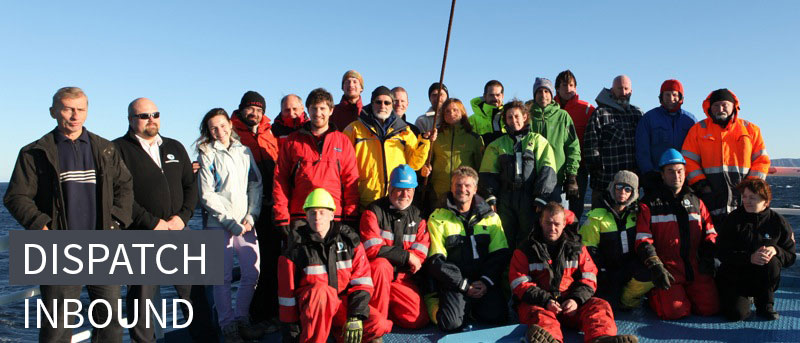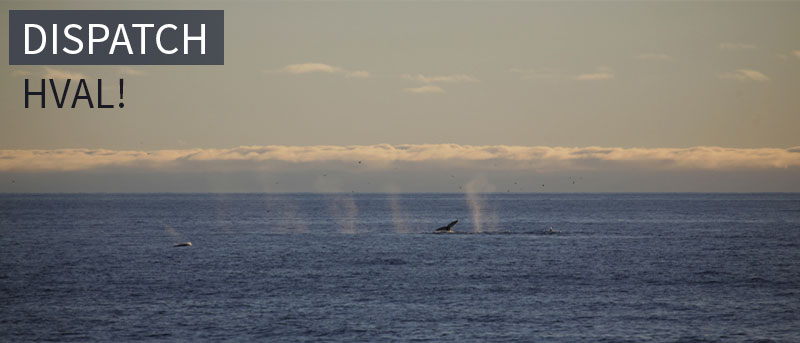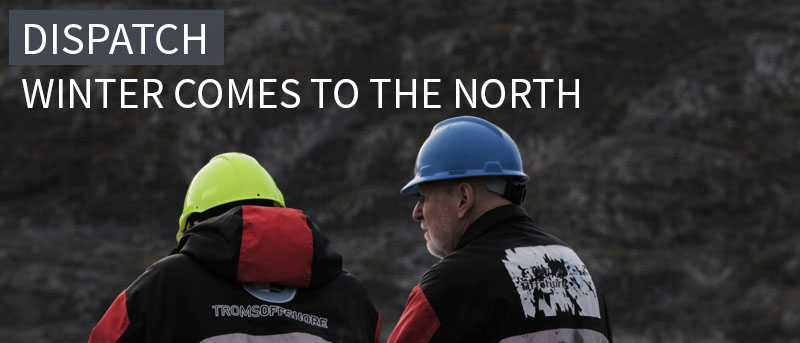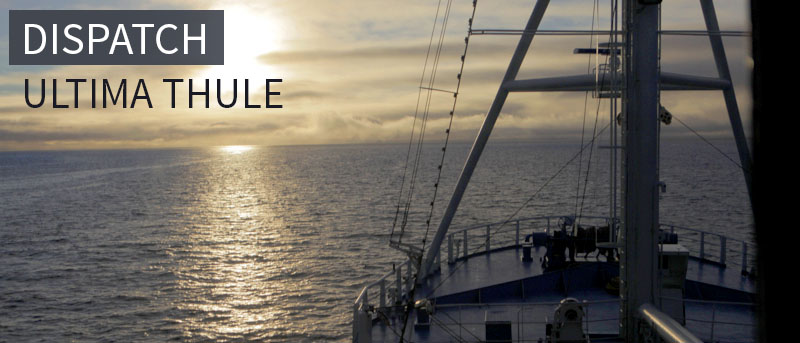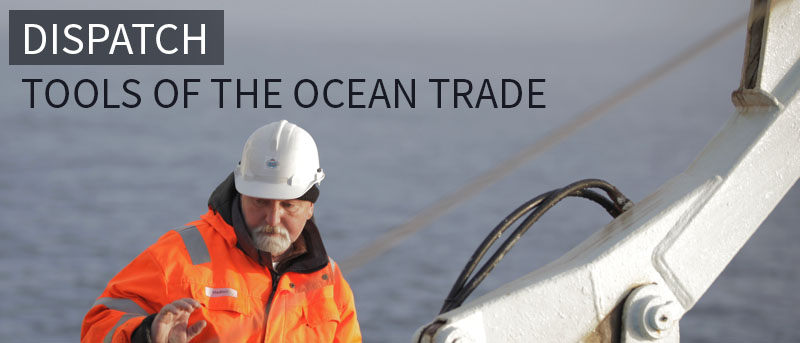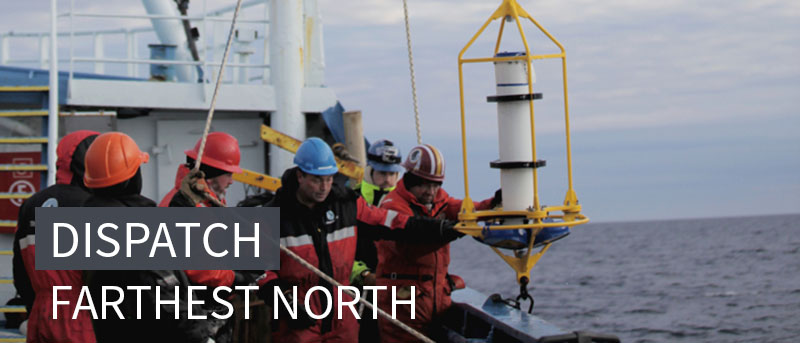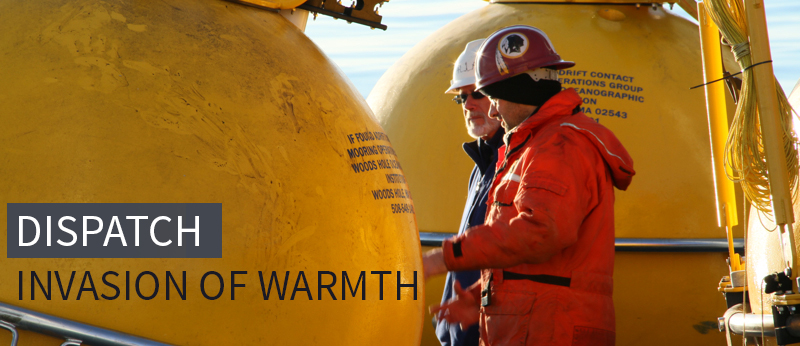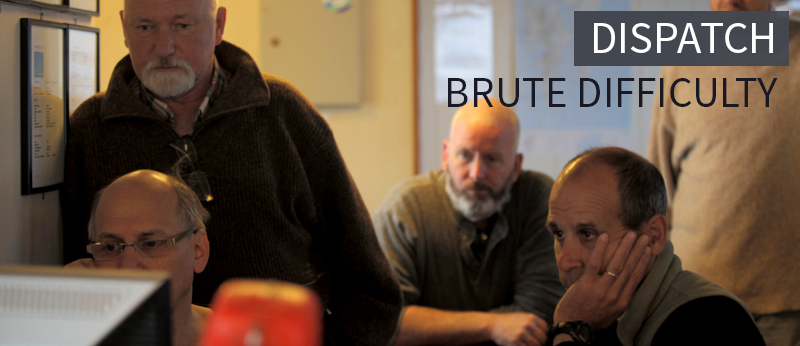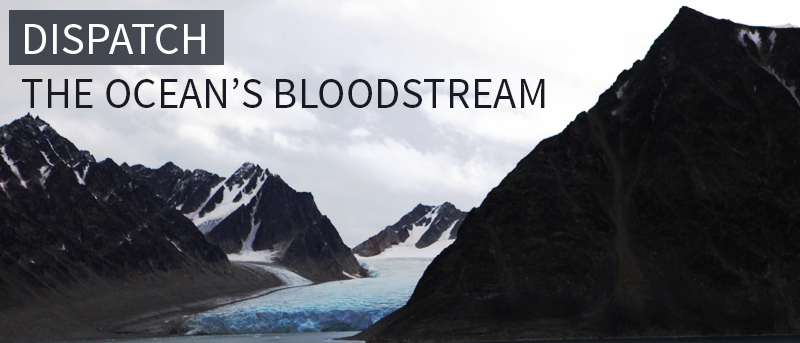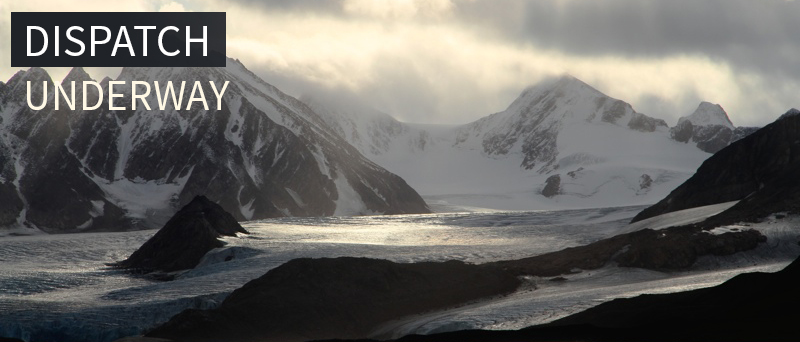JUST WHERE IS THIS ARCTIC?
September 13, 2013
Tweet
A sign beside the post office door in Longyearbyen, Spitsbergen reads: “Please leave your rifles outside.” It isn’t directed at hunters but at hikers and skiers who come from everywhere to experience the glaciers, snowfields and black-rock wilderness lying just beyond the town’s dead-end roads. You’re not allowed into the wilderness without packing a rifle, to be used only in a last-ditch act of self-preservation against polar bear attack. The bears are protected on Spitsbergen; you’d better not shoot one unless its jaws are just about to crush your skull and you have witnesses to the peril. Nothing symbolizes the Arctic more succinctly in the popular imagination than the ice bear, its mix of raw power and vulnerability. Everyone who’s been paying attention knows that these “charismatic megafauna” capable of killing you with one swipe are in mortal danger from habitat loss, melting sea ice due to the warming caused by the works of us.
But just what is this Arctic?
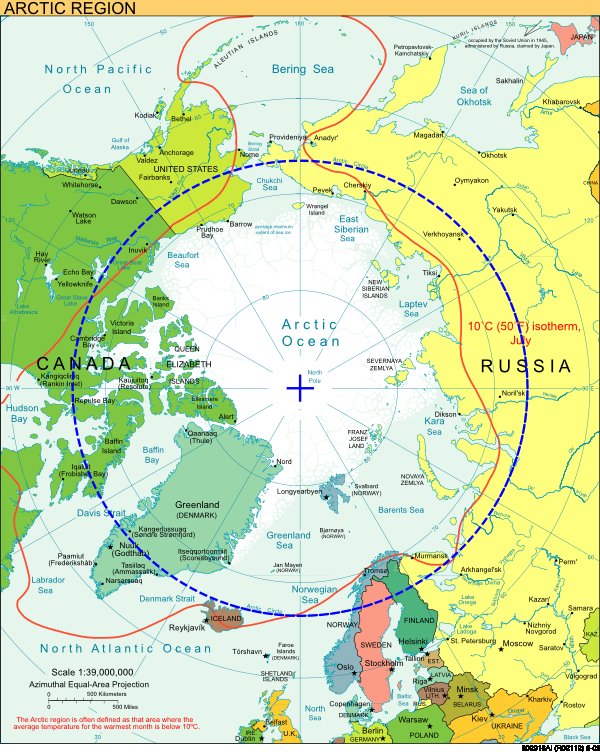 For a word so much in the news these days, it remains only vaguely understood as this cold place way up north, you know, northern lights, igloos, white bears, and ice. It is way up north, but where precisely? What do we mean when we say Arctic? It’s not a simple question; there is more than one Arctic.
For a word so much in the news these days, it remains only vaguely understood as this cold place way up north, you know, northern lights, igloos, white bears, and ice. It is way up north, but where precisely? What do we mean when we say Arctic? It’s not a simple question; there is more than one Arctic.
To the geographer, Arctic boundaries are concretely definable: All land and water north of the Arctic Circle is the Arctic, and everything south of it is not. The circumference of the circle lies along 66° 33’ North latitude. (SIDEBAR: There are 60 nautical miles in each degree of latitude. The equator is designated zero degrees latitude and the North Pole 90° North. Therefore, the diameter of the Arctic Circle is 1,420 nm.) This position is not arbitrary. The Greeks and the Babylonians before them recognized that in the Northern Hemisphere stars circled one central star and that some stars rose and set during the night, while others remained constantly visible. The Greeks identified a circle in the sky that marked the boundary between rising and setting stars and those always visible. They noticed that the circle passed through the constellation of Arktos—the Great Bear—and so they called it the Bear’s Circle, or the Arctic Circle.
But hang on, the botanist or biologist might say. That perfectly round circle excludes places such as Hudson Bay, Labrador, and parts of Siberia that share distinctly Arctic conditions. Terrestrial scientists prefer an “ecological” border—the timberline, beyond which trees must give way to tundra. Unlike the geographer’s circle, the timberline wavers. In Siberia and Canada trees give up well south of the Arctic Circle, while in Scandinavia, they grow far north of it. This, too, is the Arctic.
To the oceanographer, the Arctic is an ocean basin almost entirely enclosed by continents. Check the map, for this is obscure geography: There are two major routes, almost diametrically opposite each other, by which water can enter and exit the basin, a relatively narrow one through the Bering Strait and a large one between Greenland and Norway. There are other ice-choked and constricted routes of flow among the shatter of islands in the Canadian Archipelago, and there is a limited exchange of Baffin Bay and Arctic water through the Nares Strait between Greenland and Ellesmere Island. You’ll notice also a ring of comparatively shallow “seas” around the margins of the deep central basin. Clockwise from Svalbard, they are: the Barents, Kara, Laptev, East Siberian, Chukchi, Beaufort, and Lincoln seas. Nature doesn’t care about these watery distinctions, only humans who, to make sense of things, need to name them. Perhaps in simpler times, ocean scientists could distinguish as the Arctic Ocean that part of the basin that remained more or less permanently frozen, but no longer, not with the seemingly inexorable loss of sea ice. So for oceanographic purposes, the Arctic encompasses the entire basin, frozen or not, north of Greenland, Scandinavia, Russia, the United States, and Canada.
To me and to others who’ll soon board the Norwegian research vessel Lance, the Arctic is a wonderland. There’s something up here, something in the slant of light on fractured sea ice, the distant saw-toothed mountain crests, in the blue-ice glaciers and in the very air of the Arctic that reaches out and grabs certain people—it has for centuries—and never lets go. When such people are ashore, going about their lower-latitude life, they sometimes think about that crystalline light, the silence and timeless stillness in the land- and seascape, and they recall that cold, starry night when the Aurora performed for hours its mystical extravagance. I was here only a year ago, but I’ve missed the Arctic with something akin to homesickness. And now it’s time to get underway, northbound through the Fram Strait into the Arctic Ocean, farther north than most of have ever sailed.
It's time.
-Dallas Murphy


